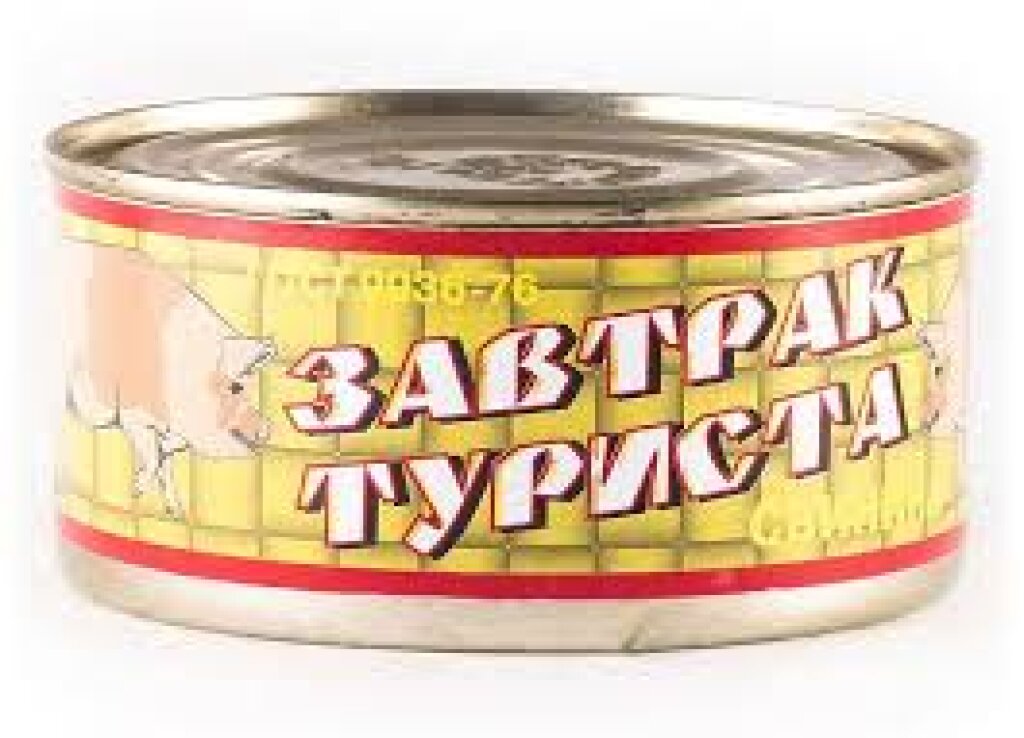This is the twenty-fifth entry of Russia’s Alien Nations: The Secret Identities of Post-Socialism, an ongoing feature on All the Russias, as well as the twelfth entry of Chapter 1. It can also be found at russiasaliennations.org. You can also find all the previous entries here.
On sovokoftheweek.com, the sovok is surrounded by a set of clear consumer signifiers: not Adidas, but Turkish knock-offs. Ketchup rather than marinara sauce. Salo-and-butter sandwiches brought from home rather than expensive caviar and champagne. Belomor Canal cigarettes rather than Davidoff. All of this could suggest snobbery, but the narrative stance is bemused embarrassment over the “bad” brands rather than crass pride in the “good” ones. In stark contrasts to the New Russians we will see in the next chapter, the point is inconspicuous rather than conspicuous consumption. The next step in evolution from the sovok is neutrality rather than garishness, since the sovok’s own attachment to trashy consumer culture, against the backdrop of increasing consumer sophistication, ends up , in a perverse way, ostentatious. The things that surround the New Russian are unavailable to the “neutral” narrator, while the accoutrements of the sovok are painfully familiar, because the narrator is only a few steps away from an existence that used to be unmarked, but now is unmistakably sovok.
This is why the sovok phenomenon is haunted by so much ambivalence. One wants to reject the sovok as tacky while also retaining an affection for the naive simplicity of a much more straightforward consumer lifestyle. Such simplicity is by no means value neutral. The late Soviet media and educational system condemned what was called “veshchizm;” literally “thing-ism,” the word is most commonly translated as materialism, but, as a Russian linguistic invention it manages to completely avoid any association with the philosophical materialism so fundamental to Soviet thought (dialectical materialism).
Starting with the campaign against the stilyagi in the 1950s, it became important to condemn those who chased after nice clothes and cool gadgets. The rejection of veshchizm combined expedience (there was no way the Soviet Union was going to satisfy consumer demand) with moral superiority (why should mere material objects matter so much?). Though the vocabulary used in the Soviet struggle against meshchanstvo (petty-bourgeois preoccupations) had long gone stale, it did not conflict with an appealing romanticism that could be found in everything from spontaneous gatherings and camping trips to the anti-materialist ethos of Soviet hippies. Condemning the sovok on the grounds of sheer consumer tackiness is a tacit admission that having nice material goods is, well, good, and that matter matters.
As my references to youth culture suggest, the sovok also had a role in intergenerational conflict; as perestroika wore on, young people were more open in their demands for nicer things, much to the consternation of many of their parents. Moreover, the ambivalence about the sovok, that is, the way in which the sovok is simultaneously embarrassing and endearing, is far more legible in the West if we compare it to phenomena associated with immigration. The cheapness and tackiness of the sovok find echoes in the fiction and memoirs of first-generation immigrants writing about their parents. Of course, the post-Soviet story is, technically, not one of immigration—we are primarily concerned with the culture of people who remained in the Russian Federation after the fall of the USSR. But the experience of the Soviet collapse is comparable to that of emigration, in that the adult citizens of one country (the USSR) found themselves struggling to deal with the new realities of another (the Russian Federation).
When this displacement is confined to the literal, everyday world (that is, stories of once-Soviet people trying to make their way in a no longer Soviet world), mockery of the sovok can cut too close to the bone. Where is the pleasure in making fun of old people whom the world has passed by? The Promised Heavens, the film I discussed in the introduction, could easily have turned its forgotten Soviet pensioners into a merciless caricature, but to what purpose? A much safer and more reliable source of humor about the gap between sovok styles and the new consumer culture is found in tales of the sovok traveling to foreign lands. After all, one of the joys of travel literature is not just discovering the “natives” of another country, but the strengths and foibles of one’s own people that reveal themselves when one is abroad.
We will see our fair share of this later in the chapter, when we look at Yuri Mamin’s 1993 film Window to Paris. For now, the tropes of the traveling sovok are well catalogued in Gennady Belostotsky’s review of the 2004 film Kostya Gumankov’s Paris Love:
Around one quarter of the film plays out (for the nth time) the arrangements for sending Soviet tourists abroad, with a large part taken up by variations on the theme “ sovok in Paris” (sausage and Salo in suitcases, the immersion heater in the hotel, the shopping trips to stores that have everything you could want!)
Though the term “sovok” was only popularized in the 1980s, the phenomena it named had all been around for quite some time. Mocking someone as “sovok” only makes sense in the face of an alternative. The Soviet-era traveler with his immersion heater and his canned “Tourist’s Breakfasts” may look pathetic, but is he to blame? Stories like Kostya Gumankov’s Paris Love can turn the sovok of old into an object of bittersweet nostalgia rather than derision. But the sovok rejected by a member of the late Soviet counter-culture, a black marketeer/future entrepreneur, or the privileged scion of the well-connected Soviet elite is another thing entirely. That sovok is always backwards, and always in danger of being left behind.
The sovok’s plight becomes more pointed after 1991, when sovok-the-country is no more, but sovok-the-attitude and sovok-the-person could not have been expected to disappear as quickly as the system that created them. Now, in one of the many ironies that bracket the rise and fall of the USSR, the sovok would occupy a position homologous to the groups that, in the 1920s, were considered “holdovers of the past” (perzhitki proshologo), largely people with petty bourgeois attitudes. The 1920s holdovers were bad subjects in part because they placed too much emphasis on wealth and creature comforts; the sovki-as-holdovers are bad subjects in part because they cannot master the codes of new capitalist consumer culture. Marx defined class in terms of relation to capital, but the bad subjects of twentieth-century Russia are defined in relation to consumption.
Next: Selling the Cherry Orchard



